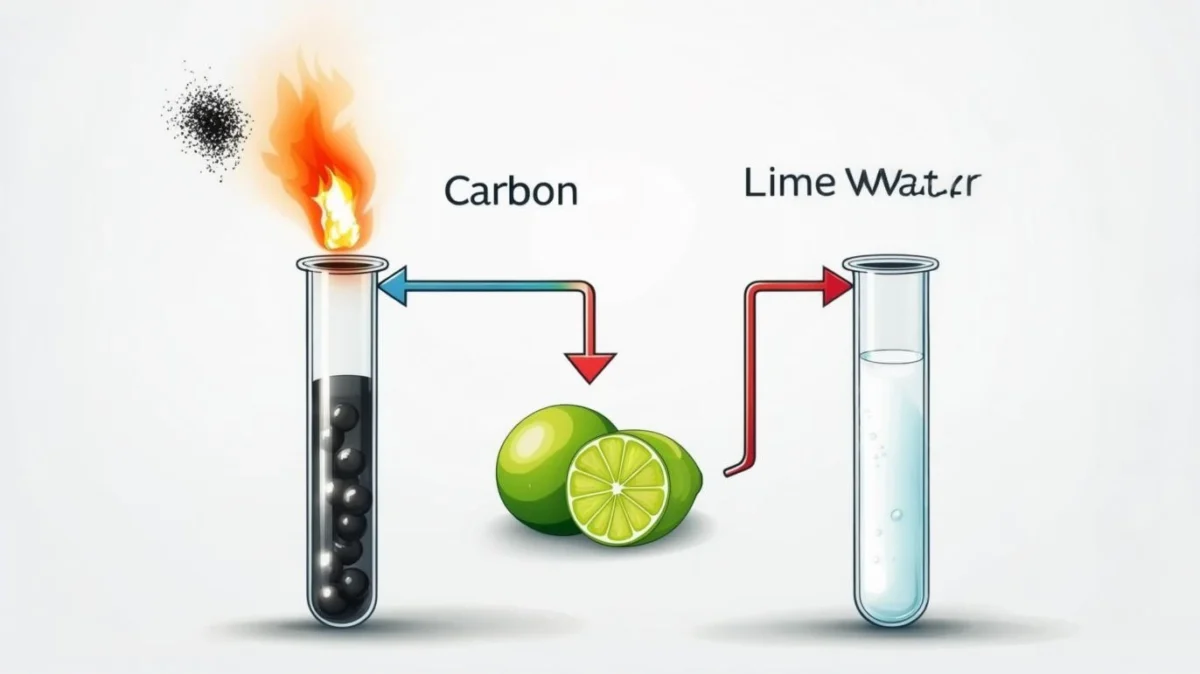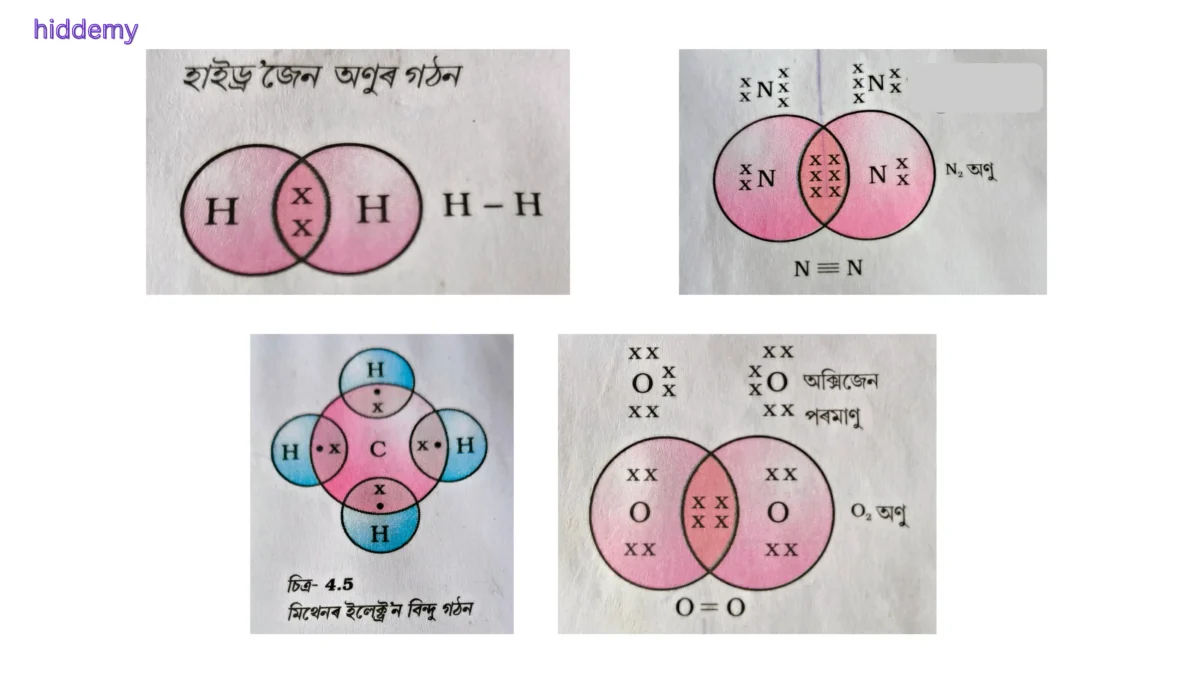SEBA Class 10 Science Chapter 4: Carbon and its Compounds | কাৰ্বন আৰু তাৰ যৌগ
SEBA Class 10 Science Chapter 4 Notes Carbon and its Compounds (কাৰ্বন আৰু তাৰ যৌগ) for HSLC 2026
SEBA Class 10 Science Chapter 4 Notes Carbon and its Compounds are very important for HSLC 2026 students. These SEBA Class 10 Science Chapter 4 Notes Carbon and its Compounds explain core topics like covalent bonding, versatile carbon nature, and functional groups. While the chapter is a bit lengthy, these notes simplify it for easy revision.
With SEBA Class 10 Science Chapter 4 Notes Carbon and its Compounds, students can master complex parts like structural isomerism, IUPAC naming, and carbon allotropes. Sometimes tricky reactions might confuse learners, but our notes use solved examples and visuals to clear doubts on কাৰ্বন আৰু তাৰ যৌগ.
SEBA Class 10 Science Chapter 4 Notes Carbon and its Compounds also explain ethanol, ethanoic acid, and soap-detergent mechanisms in easy terms. These SEBA Class 10 Science Chapter 4 Notes follow NCERT and SEBA guidelines and are ideal for scoring well—even if you're struggling to grasp chemistry fast.
Use these SEBA Class 10 Science Chapter 4 Notes Carbon and its Compounds for quick recaps and focused study. Practice from the MCQs for Carbon and its Compounds and refer to the official NCERT Class 10 Science Book for deeper content.
SEBA Class 10 Science Chapter 4 Notes: Carbon and its Compounds | কাৰ্বন আৰু তাৰ যৌগ
✦ কাৰ্বন (Carbon)
কাৰ্বনৰ প্ৰচুৰতা (Abundance of Carbon)
- পৃথিৱীৰ খোলাত কাৰ্বন ১৫তম সৰ্বাধিক পোৱা মৌল।
- পৃথিৱীৰ খোলাত খনিজ পদাৰ্থৰ ৰূপত প্ৰায় ০.০২% কাৰ্বন পোৱা যায়, যেনে: কাৰ্বনেট, হাইড্ৰজেন কাৰ্বনেট, কয়লা আৰু পেট্ৰলিয়াম।
- বায়ুমণ্ডলত কাৰ্বন চতুৰ্থ সৰ্বাধিক পোৱা গেছ, কাৰ্বন ডাইঅক্সাইড (CO₂) ৰূপত প্ৰায় ০.০৩%।
কাৰ্বনৰ উপস্থিতি পৰীক্ষা (Test for the Presence of Carbon)
- কাৰ্বন থকা কোনো বস্তু দহন কৰিলে এটা বৰণহীন আৰু গোন্ধহীন গেছ উৎপন্ন হয়, যাক কাৰ্বন ডাইঅক্সাইড (CO₂) বোলে।
- পৰীক্ষা: চূণপানীৰ মাজেৰে কাৰ্বন ডাইঅক্সাইড গেছ পঠিয়ালে চূণপানীখিনি ঘোলা বা ধকধকীয়া বগা হৈ কেলছিয়াম কাৰ্বনেট (CaCO₃) উৎপন্ন হয়।

✦ সহযোজী বান্ধনি (Covalent Bond)
সংজ্ঞা (Definition)
- দুটা পৰমাণুৰ মাজত ইলেক্ট্ৰন ভাগ-বতৰা কৰি গঠন হোৱা বান্ধনিক সহযোজী বান্ধনি বোলে।
- কাৰ্বনে সদায় সহযোজী বান্ধনি গঠন কৰি যৌগ তৈয়াৰ কৰে।
সহযোজী যৌগৰ বৈশিষ্ট্য (Properties of Covalent Compounds)
- নিম্ন গলনাংক আৰু উতলাংক: সহযোজী যৌগৰ অণুবোৰৰ মাজত আন্তঃআণৱিক বল অতি কম।
- বিদ্যুতৰ অপৰিবাহী: সহযোজী যৌগত কোনো আয়ন বা আহিত কণিকা নাথাকে, কাৰণ পৰমাণুৰ মাজত ইলেক্ট্ৰন ভাগ-বতৰাহে হয়।
কাৰ্বনে কিয় সহযোজী বান্ধনি গঠন কৰে? (Why Carbon Forms Covalent Bonds?)
- কাৰ্বনে ৪টা ইলেক্ট্ৰন গ্ৰহণ কৰি C⁴⁻ এনায়ন গঠন কৰিব নোৱাৰে, কাৰণ ৬টা প্ৰট’নে ১০টা ইলেক্ট্ৰন (৪টা অতিৰিক্ত) ধৰি ৰাখিব নোৱাৰে।
- একেদৰে, ৪টা ইলেক্ট্ৰন ত্যাগ কৰি C⁴⁺ কেটায়ন গঠন কৰিবলৈ বহুত শক্তিৰ প্ৰয়োজন, যিটো সম্ভৱ নহয়।
- তাৰ বাবে কাৰ্বনে ইলেক্ট্ৰন ভাগ-বতৰা কৰি সহযোজী বান্ধনি গঠন কৰে।
ইলেক্ট্ৰন বিন্দু গঠনৰ উদাহৰণ (Examples of Electron Dot Structures)
- হাইড্ৰ’জেন অণু (H₂): প্ৰতিটো হাইড্ৰ’জেন পৰমাণুৰ বহিৰতম কক্ষত (K-কক্ষ) ১টা ইলেক্ট্ৰন থাকে আৰু কক্ষটো পূৰ্ণ কৰিবলৈ আৰু ১টা ইলেক্ট্ৰনৰ প্ৰয়োজন। দুটা হাইড্ৰ’জেন পৰমাণুৱে ১টা ইলেক্ট্ৰন যোৰ ভাগ-বতৰা কৰি হিলিয়াম (He)ৰ ইলেক্ট্ৰনীয় বিন্যাস লাভ কৰে আৰু এটা একক সহযোজী বান্ধনি গঠন কৰে।
- অক্সিজেন অণু (O₂): দুটা অক্সিজেন পৰমাণুৱে ২টা ইলেক্ট্ৰন যোৰ ভাগ-বতৰা কৰি দ্বি-সহযোজী বান্ধনি গঠন কৰে।
- এম’নিয়া অণু (NH₃): নাইট্ৰ’জেনে ৩টা হাইড্ৰ’জেন পৰমাণুৰ সৈতে ইলেক্ট্ৰন ভাগ-বতৰা কৰি ৩টা একক সহযোজী বান্ধনি গঠন কৰে।
- মিথেন অণু (CH₄): কাৰ্বনে ৪টা হাইড্ৰ’জেন পৰমাণুৰ সৈতে ইলেক্ট্ৰন ভাগ-বতৰা কৰি ৪টা একক সহযোজী বান্ধনি গঠন কৰে। মিথেন কাৰ্বনে গঠন কৰা সৰলতম যৌগ। ইয়াক ইন্ধন হিচাপে ব্যৱহাৰ কৰা হয় আৰু ই জৈৱ গেছ আৰু সংকুচিত প্ৰাকৃতিক গেছ (CNG)ৰ এক উপাদান। মিথেনত কাৰ্বন চতুৰ্সহযোজী (৪টা বান্ধনি গঠন কৰে)।

Electron Dot Structures of H₂, O₂, NH₃, and CH₄
✦ বহুধাগুণযুক্ত কাৰ্বন (Versatile Nature of Carbon)
Content for versatile nature of carbon to be added here.
✦ কাৰ্বনৰ বহুৰূপতা (Allotropes of Carbon)
Content for allotropes of carbon to be added here.
🎁 Coupon Code: Gem100 ব্যৱহাৰ কৰা।
Enroll in Our Class 10 Science Course!
Unlock the full SEBA Class 10 Science Chapter 4 – Carbon and its Compounds experience with beautifully designed diagrams, detailed notes, and expert guidance. Perfect for HSLC 2026 preparation.

Class 10 Science Detail Notes Course FAQs
Course Details
Summary: This course is a complete package for SEBA Class 10 Science. It covers Physics, Chemistry, and Biology chapters with Assamese-medium explanations, diagrams, MCQs, previous year questions, and practice sets—all in one place for HSLC 2026.
Course Benefits
Summary: Get expert-made notes, interactive quizzes, downloadable PDFs, chapter-wise videos, and exam-focused MCQs. Designed for complete understanding and high score in Class 10 SEBA exams.
What You'll Learn
Summary: You will master chapters like Chemical Reactions and Equations, Carbon and its Compounds, Heredity and Evolution, Sources of Energy, etc., with topic-wise videos, animations, NCERT-based questions, and bilingual (English–Assamese) support.
Duration & Format
Summary: Self-paced online course accessible anytime. Notes and videos available 24×7 with lifetime access after enrollment. Study at your own speed!
Who Should Join
Summary: Ideal for Class 10 SEBA students (Assamese Medium), especially those preparing for HSLC 2026. Also suitable for students who want visual learning, practice materials, and full revision help.
Explore More
| Chapter | Resources |
|---|---|
| Chapter 1: ৰাসায়নিক বিক্ৰিয়া আৰু সমীকৰণ | |
| Chapter 2: এচিড, ক্ষাৰক আৰু লৱণ | |
| Chapter 3: ধাতু আৰু অধাতু | |
| Chapter 4: কাৰ্বন আৰু তাৰ যৌগ | |
| Chapter 12: বিদ্যুৎ | |
| Additional Resources |



